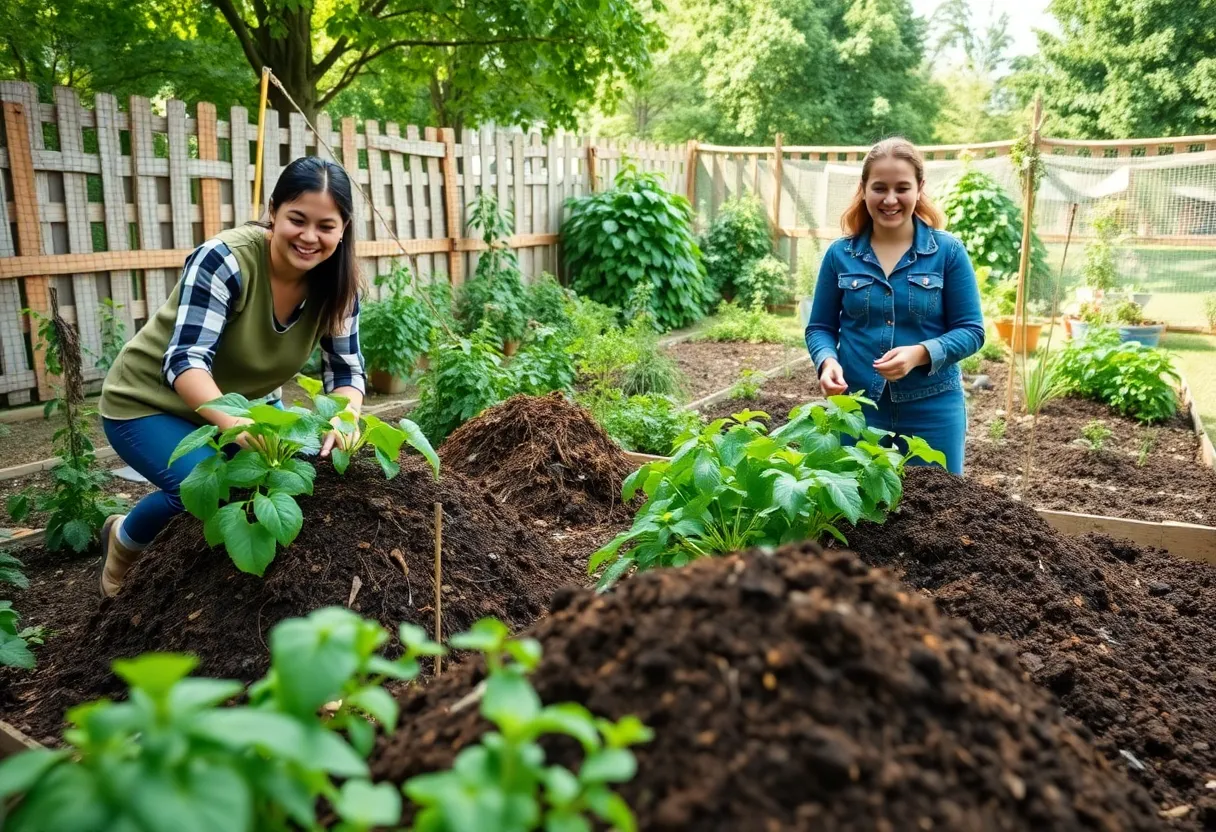News Summary
The City of San Diego has wrapped up a two-week pilot named ‘Follow The Compost Pile,’ focusing on improving compost quality by employing individuals transitioning out of homelessness. Participants manually removed contaminants from organic waste, aiming to lower contamination rates and enhance the compost’s viability for local gardens. The program highlighted the significant presence of items like plastic bags in green bins and emphasized the need for public education on proper waste disposal. The city plans further analysis of the collected data and an educational campaign this fall.
San Diego – The City of San Diego has concluded a two-week pilot program called “Follow The Compost Pile,” aimed at improving the quality of compost generated by the Miramar Greenery. The initiative, which ended on Wednesday, focused on employing individuals transitioning out of homelessness to manually remove non-organic materials from organic waste collected in the city’s green bins.
Participants in the program were hired through the East County Transitional Living Center and tasked with extracting contaminants such as plastic bags, scrap metal, and glass bottles from organic waste. This hands-on approach was intended to reduce the contamination rate in compost, thereby enhancing the quality of the final product available to the community.
Jennifer Winfrey, assistant deputy director of the Environmental Services Department, highlighted the potential benefits of continuing this program. According to Winfrey, the pilot could help in significantly lowering contaminant levels in compost, improving operational efficiencies, and producing a higher quality of compost for use in local gardens and landscapes.
Since the introduction of green bins in 2023, the city has seen an increase in organic waste recycling, with over 200,000 San Diegans participating in the initiative. The volume of organic waste processed jumped from 142,297 tons in 2023 to 194,310 tons in 2024, showcasing a growing commitment to sustainability among residents.
Prior to the pilot program, the removal of contaminants was achieved through a grinding and screening process, which could be less efficient compared to manual sorting. The pilot program involved documenting, weighing, and cataloging the contaminants found in the waste. The Environmental Services Department is now in the process of analyzing the collected data, with results expected in the following weeks.
A significant issue identified during the pilot program was the frequent presence of plastic bags in organic waste, which are unsuitable for composting. When processed, a single plastic bag can break down into thousands of tiny plastic fragments, further contaminating the compost and complicating recycling efforts.
Moreover, improper management of organic waste poses environmental challenges. Decomposing organic materials are responsible for approximately 20% of California’s methane emissions, a potent greenhouse gas contributing to climate change. The city aims to address this issue by ensuring that residents are informed about the proper disposal of items in green bins.
Acceptable materials for green bins include yard waste, such as grass clippings and branch trimmings, along with food scraps, including eggshells, vegetable peelings, coffee grounds, and even meat bones. Additionally, the city offers dedicated recycling options for hard-to-recycle items such as appliances and electronics through WasteFreeSD.org.
The details regarding how many individuals were employed during the pilot program and their compensation are still pending. The Environmental Services Department is also preparing for a public education campaign scheduled for this fall, aimed at teaching residents proper waste disposal techniques to reduce contamination rates in green bins.
Concerns have been raised regarding inappropriate items found in green bins during the pilot program, with reports of car parts and gas tanks surfacing among organic waste. Such findings underscore the ongoing need for resident education and awareness of proper recycling practices.
In summary, the “Follow The Compost Pile” pilot program not only aimed to improve compost quality but also provided transitional employment opportunities for individuals experiencing homelessness, while raising awareness about sustainable waste management practices within the San Diego community.
Deeper Dive: News & Info About This Topic
HERE Resources
Additional Resources
- Escondido Grapevine: San Diego’s War on Waste
- Google Search: San Diego Compost Pilot Program
- Hoodline: San Diego Tackles Green Bin Contamination
- Google Scholar: San Diego Green Bin Contamination
- NBC San Diego: Green Bins Compost Concerns
- Encyclopedia Britannica: Composting
- Fox 5 San Diego: Proposed Homeless Mega Shelter
- Google News: San Diego Food Waste
- CBS 8: New Tech Tackles San Diego Food Waste
- StateScoop: San Diego Homeless Resources

Author: STAFF HERE SAN DIEGO WRITER
The SAN DIEGO STAFF WRITER represents the experienced team at HERESanDiego.com, your go-to source for actionable local news and information in San Diego, San Diego County, and beyond. Specializing in "news you can use," we cover essential topics like product reviews for personal and business needs, local business directories, politics, real estate trends, neighborhood insights, and state news affecting the area—with deep expertise drawn from years of dedicated reporting and strong community input, including local press releases and business updates. We deliver top reporting on high-value events such as Comic-Con International, San Diego County Fair, and San Diego Pride Festival. Our coverage extends to key organizations like the San Diego Regional Chamber of Commerce and United Way of San Diego County, plus leading businesses in biotechnology, healthcare, and technology that power the local economy such as Qualcomm, Illumina, and Scripps Health. As part of the broader HERE network, including HEREAnaheim.com, HEREBeverlyHills.com, HERECostaMesa.com, HERECoronado.com, HEREHollywood.com, HEREHuntingtonBeach.com, HERELongBeach.com, HERELosAngeles.com, HEREMissionViejo.com, and HERESantaAna.com, we provide comprehensive, credible insights into California's dynamic landscape.





